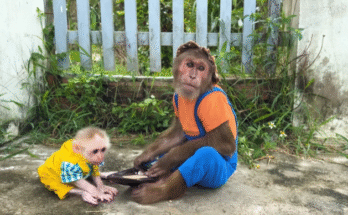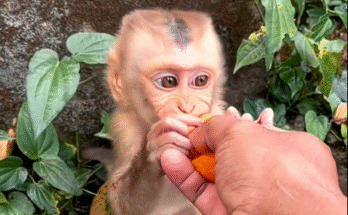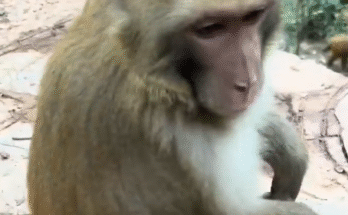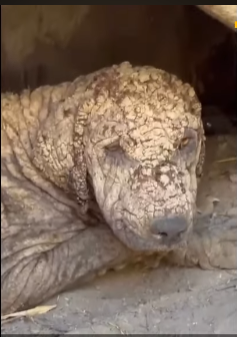
The first time I saw her, it was raining heavily. The streets were slick with water, the kind of relentless rain that turns alleys into rivers. I had been walking home from a late shift at the shelter when a faint, terrified whine caught my attention. I paused, listening carefully, and realized it was coming from the sewer grate nearby.
Peering down, I saw her—a small, trembling dog, fur matted with grime, eyes wide with fear. She was crouched in the shadows, pressed against the cold, wet walls, as if the darkness itself could protect her. Her ribs were visible through her thin, filthy coat, and she shivered uncontrollably.
She didn’t bark. She didn’t growl. She didn’t move. She simply stayed where she was, eyes fixed on me with a mixture of terror and confusion. She didn’t understand me, and I didn’t understand her. But one thing was clear: she had been abandoned, left to survive alone in the shadows of the city.
Her whines were soft, almost pleading, like she was asking a question she didn’t know the answer to: “Why is the world so cruel? Who can I trust?”
I crouched low, speaking gently. “It’s okay, sweetie. I won’t hurt you.”
She flinched, ears flattened, but didn’t run. She stayed in her corner of the sewer, trembling as if prepared for any sudden attack. Her survival instinct had taught her that humans were dangerous. Every hand reaching out meant fear, every movement a potential threat. She had no memory of love—only neglect, hunger, and pain.
For several days, I returned to the same spot, sitting quietly, speaking softly, and leaving food at the edge of the grate. She would sniff cautiously but never approach. Some days she wouldn’t even look at the food, too frightened to trust it. Each day, I left with a heavy heart, praying she would learn I meant no harm.
Then, one morning, something shifted. I had placed a blanket near the grate, along with a small dish of water. When I returned, she had moved slightly closer, crouched near the blanket. Her eyes met mine briefly, and I could have sworn she hesitated—just for a second—before retreating into the darkness.
It was progress.
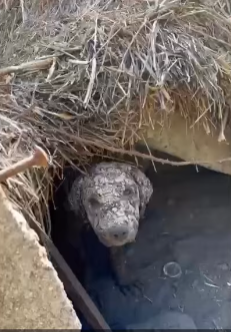
I knew that patience would be our first victory. She couldn’t learn to trust overnight. She couldn’t understand love in one moment. All she could do was survive, and I had to respect that.
I continued visiting, day after day. Sometimes she would whine softly when I left, a sound that pierced me to the core. Sometimes she would simply watch me from the shadows, head lowered, ears back, her body tense. But slowly, imperceptibly, she began to inch forward.
One rainy afternoon, she did something miraculous. I had placed the blanket and food again, and as I approached, she hesitated—then, ever so slightly, she stepped out from the shadows. Her paws were muddy, her coat soaked, but she looked at me, really looked at me, for the first time. She didn’t retreat. She didn’t flinch. She simply froze, eyes wide, calculating, as if testing the world for the first time in her life.
“Good girl,” I whispered, crouching down. “It’s okay. Come closer.”
She didn’t move immediately. But I could see the war inside her. Her instincts screamed at her to run. Her heart whispered that maybe, just maybe, she could trust me.
Minutes passed. I stayed completely still, hands open, voice soft. And then, ever so slowly, she stepped toward the blanket, sniffing at it cautiously. She nosed the food, then recoiled, unsure if it was safe. I held my breath.
“Go ahead,” I said gently. “It’s safe. You can eat.”
Finally, she took a tentative bite. Then another. Her body was tense, but she ate. And that was the moment I knew—the first bridge had been built. The first sliver of trust had formed.
The next days were a delicate dance. She would come closer, then retreat. She would allow my hand to hover near her without running, but still wouldn’t let me touch her. Her world was still frightening, full of unknown dangers. But she was learning, slowly, that humans could offer safety instead of harm.
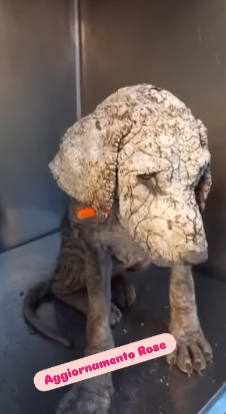
After a week of careful patience, the breakthrough came. I approached with a soft blanket, sitting near her as she ate. I extended my hand slowly, never forcing, never rushing. She looked at it, hesitated, and then—ever so tentatively—pressed her head against it.
I froze, my heart racing. She didn’t pull away. She let me stroke her wet, matted fur. She trembled, yes, but she allowed it. She had taken the leap. She had begun to learn that love could be gentle, that humans could care, that the world wasn’t always cruel.
I carried her to the shelter that day, careful to keep her wrapped in the blanket and to speak softly. She trembled the entire way, but never tried to escape. Her trust had begun, fragile and new, but undeniably real.
At the shelter, she was bathed carefully, treated for parasites, and fed nutritious meals. Her fur, once matted and grimy, began to shine. Her eyes, once full of terror, began to show curiosity. Her tail, once tucked tightly against her body, began to wag—tentatively, shyly, but unmistakably.
Weeks turned into months. She remained wary, always cautious of new people, but with consistent care and patience, she began to blossom. She learned to play with other dogs, to chase balls, to enjoy gentle petting. She learned that humans could be kind, that warmth was not a trap, and that love could exist in her world.
Her favorite spot became a soft corner of the shelter, with her blanket and a small pillow—her safe space. But unlike the sewer, she now knew she could leave that space to explore, to interact, to play, without fear of harm.
And then came the day I realized something incredible. She had curled up beside me, resting her head on my lap, eyes closed in complete relaxation. For the first time in her life, she wasn’t hiding. She wasn’t scared. She wasn’t alone. She was safe, loved, and learning to trust fully.
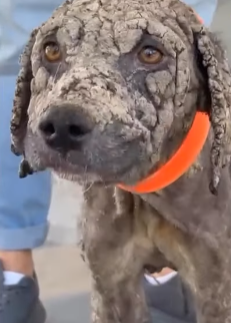
It was a quiet moment, but one of the most powerful I had ever experienced. This dog, who had once hidden in the sewer, terrified of humans and unsure of how to survive, was now beginning to understand joy. She was beginning to understand companionship. She was beginning to learn how to love again.
Her journey wasn’t over—trust, love, and security had to be reinforced every day. But she had taken the first steps. She had moved from fear to hope, from isolation to connection, from despair to the beginnings of happiness.
Her story is a testament to the resilience of animals, and to the transformative power of patience, compassion, and care. Even the most scared, traumatized creatures can learn to love again when given time and trust.
She was no longer the frightened, filthy dog hiding in the sewer. She was a living example of healing, courage, and the beauty of second chances. Every wag of her tail, every soft nuzzle, every moment she chose to stay close instead of fleeing, reminded me that love—when offered gently and consistently—can reach even the most broken hearts.
And now, as she sleeps peacefully on her blanket, ears twitching in dreams, I know she has found not only safety, but a home. Not only trust, but hope. Not only survival, but the beginning of a life filled with love again.
